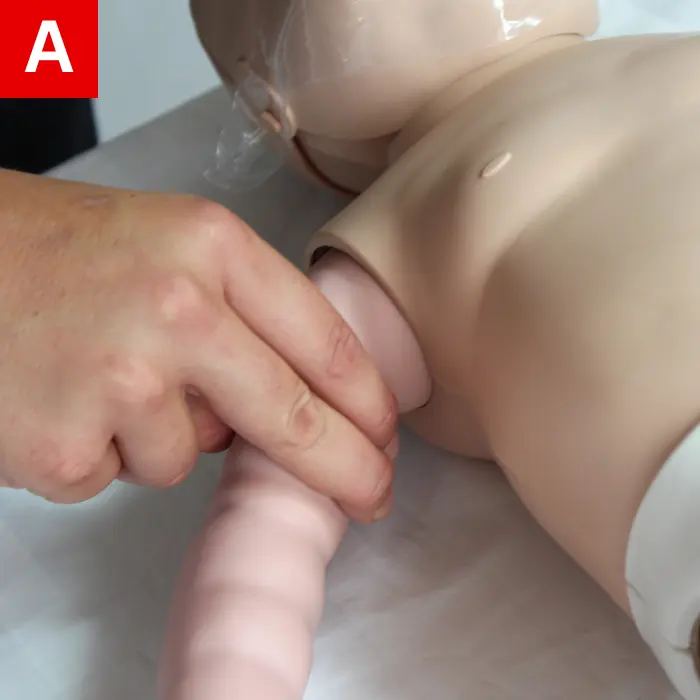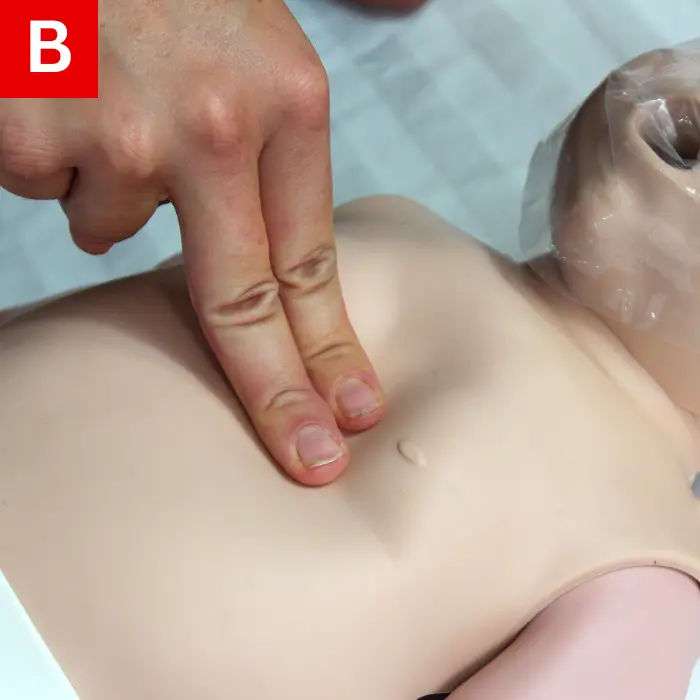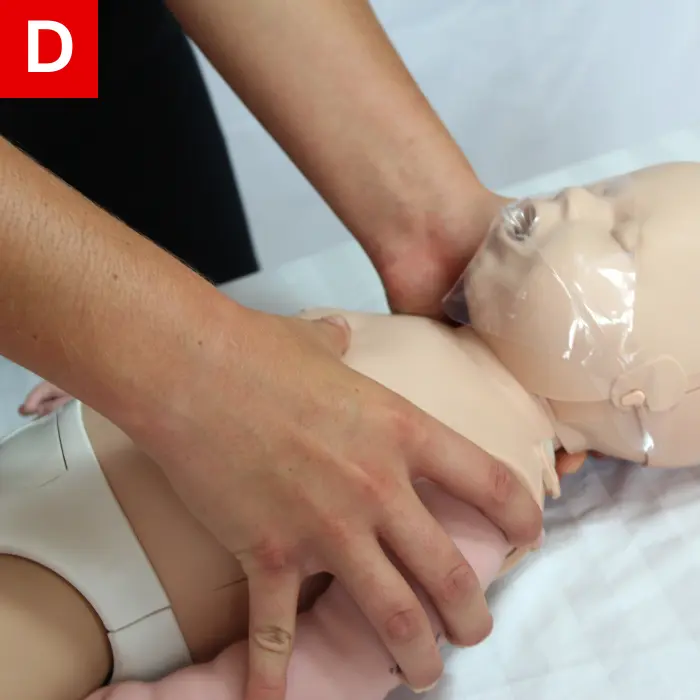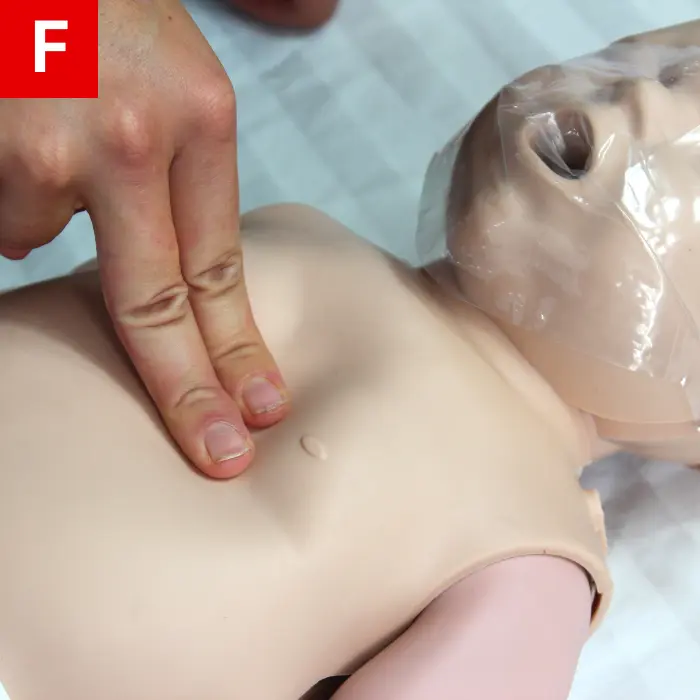One & Two Rescuer BLS for Infants (0 to 12 months old)



Figure 11
Between children and infants, BLS procedures are nearly the same. Below are the primary differences of BLS for infants and children:
- The infant’s pulse can be found using the brachial artery on the inside of the infant’s upper arm, located between the elbow and shoulder (Figure 11a).
- Instead of an entire hand, compressions can be done with just two fingers for infants if there is only one person (Figure 11b), or with two thumb-encircling hands if a second person is present and the rescuer’s hands can fit the infant’s chest (Figure 11c).
- The prescribed compression depth should be one-third of the infant’s chest depth, which is about 1.5 inches (4cm) in most cases.
- As a sole rescuer with an unresponsive infant, execute CPR for two minutes before calling 911/EMS or using an AED.
- Know that heart attacks are not common for infants and are usually started by respiratory problems. Quick action prevents the problem from turning into something bigger, as prevention is the primary step in the Pediatric Chain of Survival.
- When an infant experiences cardiac arrest, phone 911/EMS or secure an AED the same way you would with children and adults.
One-Rescuer BLS for Infants



Figure 11
As the sole rescuer at the scene of an emergency, make sure to take the following actions:
- Tap the heel of their foot and talk loudly at the infant to determine if they are responsive.
- Assess if they are breathing (Figure 11d) while simultaneously checking for the infant’s brachial pulse for 5 but no more than 10 seconds (Figure 11e). If the infant does not respond and is not breathing (only gasping), yell for help.
- If someone responds, send the second rescuer to call 911/EMS and get an AED. (The ILCOR emphasizes that cell phones are available everywhere now and most have a built-in speakerphone, so rescuers do not have to leave the scene.)
- If you cannot feel a pulse (or if you are unsure), begin CPR by doing 30 compressions followed by two breaths. If you can feel a pulse but the rate is less than 60 beats per minute, begin CPR. This rate is too slow for an infant. To perform CPR on an infant, do the following:
- Be sure the infant is face-up on a hard surface.
- Using two fingers, perform compressions in the center of the infant’s chest (Figure 11f); do not press on the end of the sternum as this can cause injury to the infant.
- Compression depth should be about 1.5 inches (4 cm) and 100-120 compressions.
- Perform CPR for about two minutes (using cycles of 30 compressions and two breaths). If help has not arrived, call 911/EMS and get an AED.
- Use and follow AED prompts when available while continuing CPR until EMS arrives or until the infant’s condition normalizes.
Two-Rescuer BLS for Infants

Figure 11
If you are with a second rescuer with the infant at the scene, do the following:
- Tap the bottom of their foot and talk loudly at the infant to determine if they are responsive.
- If the infant does not respond, have the second rescuer call 911/EMS, and get an AED. (The ILCOR emphasizes that cell phones are available everywhere now and most have a built-in speakerphone, so you can call while at the scene.)
- Assess if they are breathing. Feel for the infant’s brachial pulse for 5 but no more than 10 seconds.
- If you cannot feel a pulse (or if you are unsure), begin CPR by doing 15 compressions followed by two breaths. If you can feel a pulse but the rate is less than 60 beats per minute, begin CPR. This rate is too slow for an infant.
- When the second rescuer returns, begin CPR by performing 15 compressions by one rescuer and two breaths by the second rescuer. If the second rescuer can fit their hands around the infant’s chest, perform CPR using the two thumb-encircling hands method (Figure 11g). Do not press on the bottom end of the sternum as this can cause injury to the infant.
- Compressions should be approximately 1.5 inches (4 cm) deep and at a rate of at least 100-120 per minute.
- Use and follow AED prompts when available while continuing CPR until EMS arrives or until the infant’s condition normalizes.
